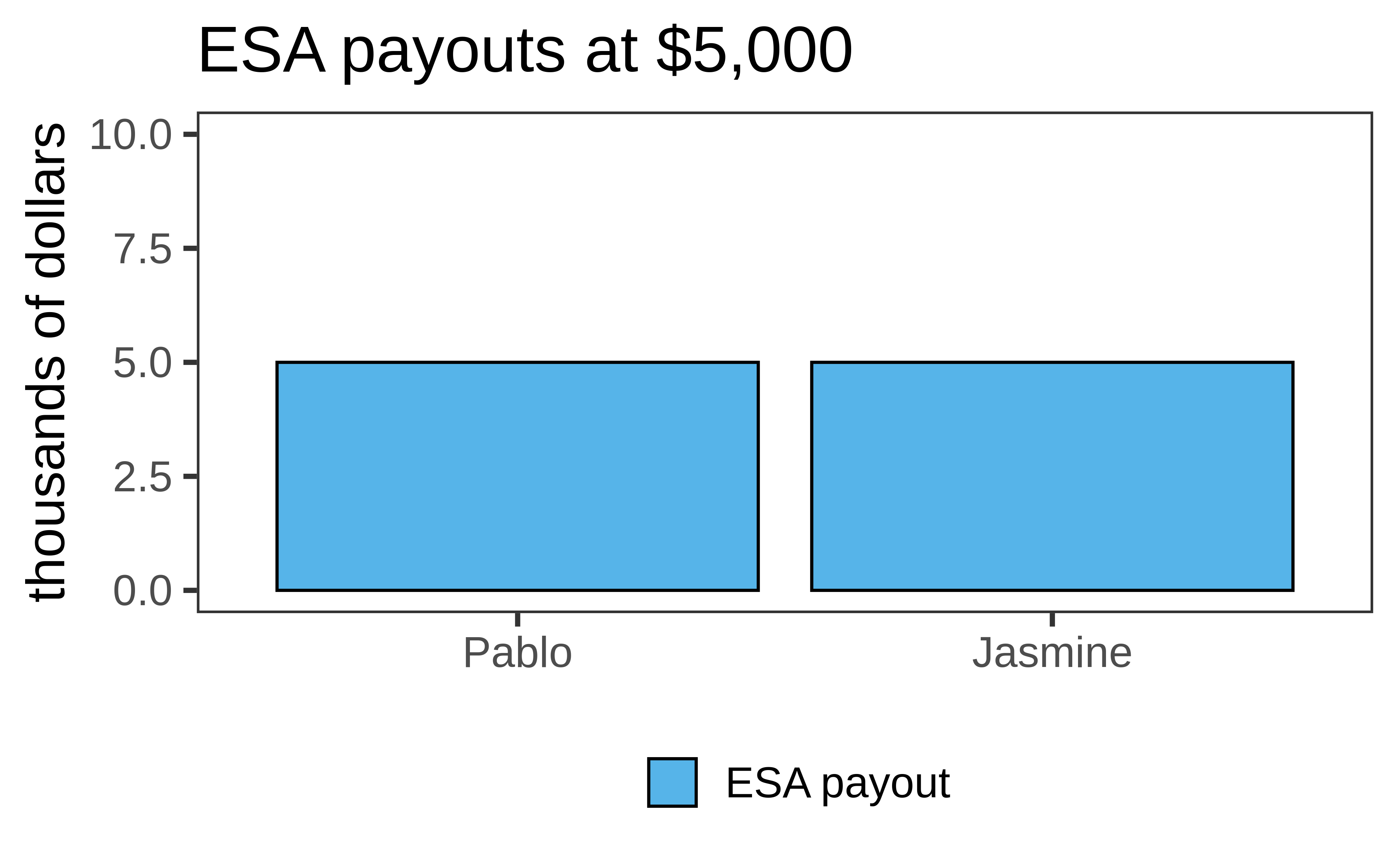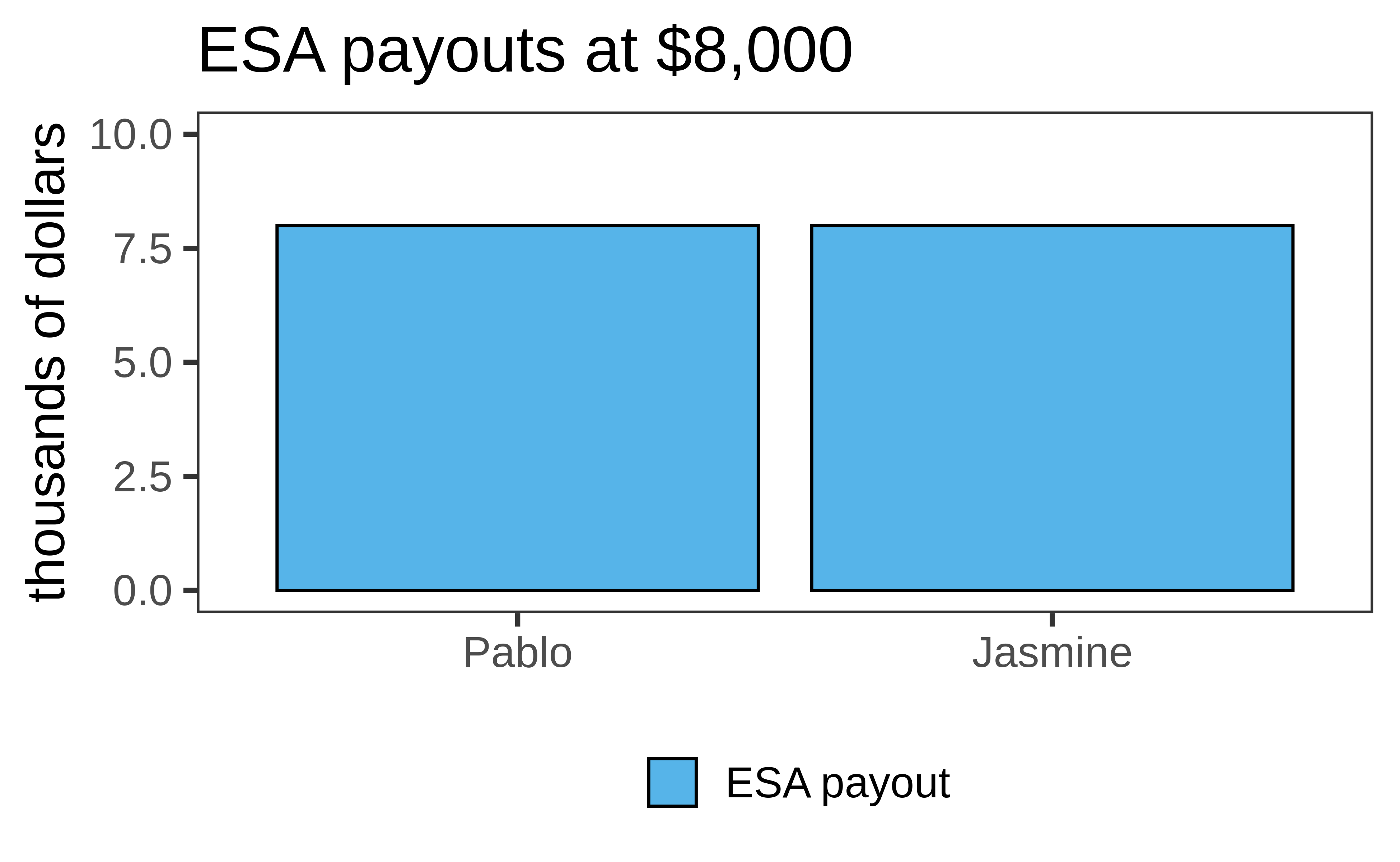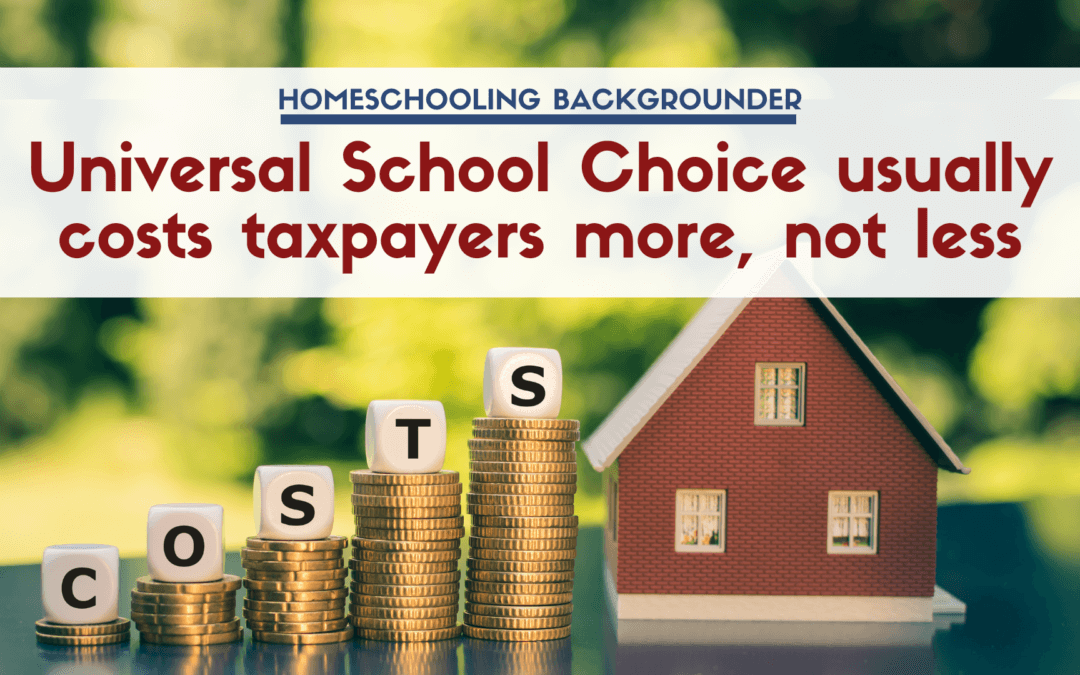Rodger Williams
October 2, 2023
Universal School Choice usually costs taxpayers more, not less.
The problem is that under Universal School Choice Education Savings Account (ESA) and universal voucher programs, the taxpayer ends up funding additional private school students who were already in a private school or who would have been anyway without the ESA money.
Note: This analysis is based on state budget K-12 spending per public school student.
Our analysis here will use a hypothetical pair of students receiving ESA money. The two students are named Pablo and Jasmine. They live in a hypothetical state which spends $10,000 per year for each student in public school.
Pablo was in public school last school year. This year he has signed up for ESA money which he is using to attend a private school.
Jasmine was in private school last year. She was not receiving ESA money. This year she has signed up for the ESA money, which she is using to attend the private school again.
Why did we choose Pablo and Jasmine?
Because they represent the national estimate that half of ESA students come from public schools and the other half were already in private education.
Half of Arizona ESA students receiving government money were already in private education. The other half come out of public schools. This ratio was determined by noting how many ESA students have state IDs, which were issued when enrolling in a public school at any time in the past.
We do not know what factors are causing the number of students in the two groups to be equal. But that, in fact, is what is happening on the ground.
Arizona is the national poster child for Universal ESAs. We use Arizona’s half-and-half ratio as the best available national estimate.
How much do Pablo and Jasmine cost taxpayers if they each receive $5,000 in ESA money this year?

Pablo is saving taxpayers $5,000 because they only pay out $5,000 for him instead of the $10,000 they paid last year for public schooling.
Jasmine, on the other hand, is costing taxpayers an additional $5,000 they did not pay out last year because she was paying her own way then to attend private school.
This all balances out. It is the break-even point for taxpayers.
How much do Pablo and Jasmine cost taxpayers if they each receive $8,000 in ESA money this year?

Pablo is saving taxpayers $2,000 because they only pay out $8,000 instead of the $10,000 they paid last year for public schooling.
Jasmine, on the other hand, is costing taxpayers an additional $8,000 they did not pay out last year because she was paying her own way then to attend private school.
Pablo saves taxpayers $2,000. Jasmine costs taxpayers an extra $8,000. The net increase for taxpayers is $6,000.
Most Universal ESA and universal voucher states pay students amounts larger than the taxpayer break-even point. So those taxpayers pay more with the ESA or voucher program than without it.

